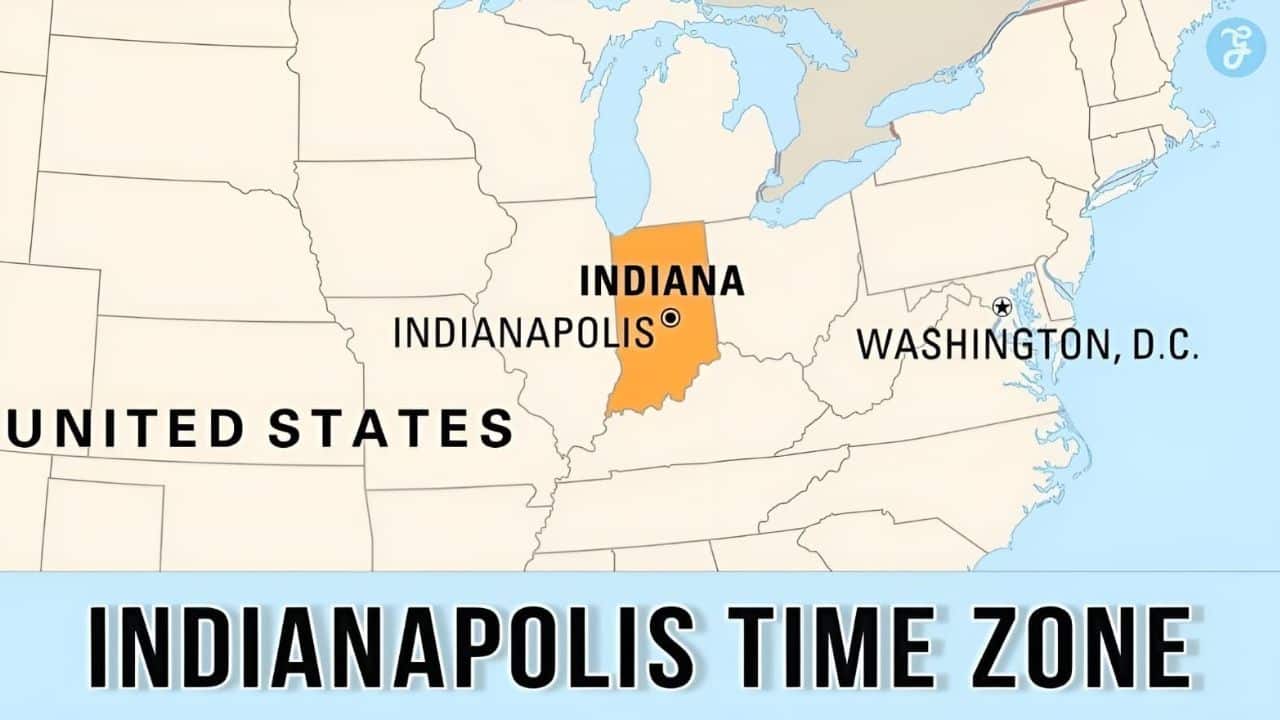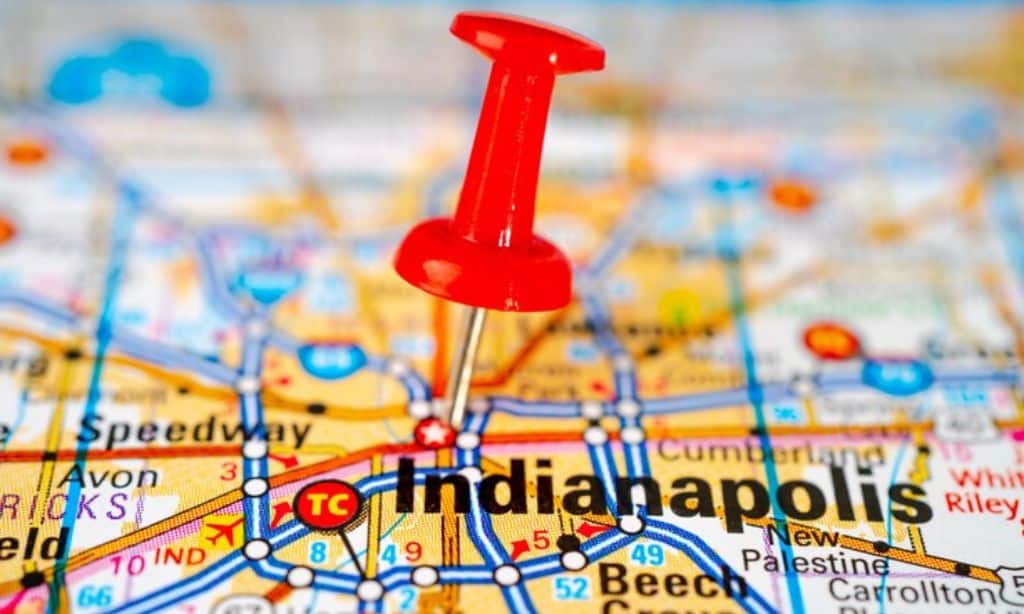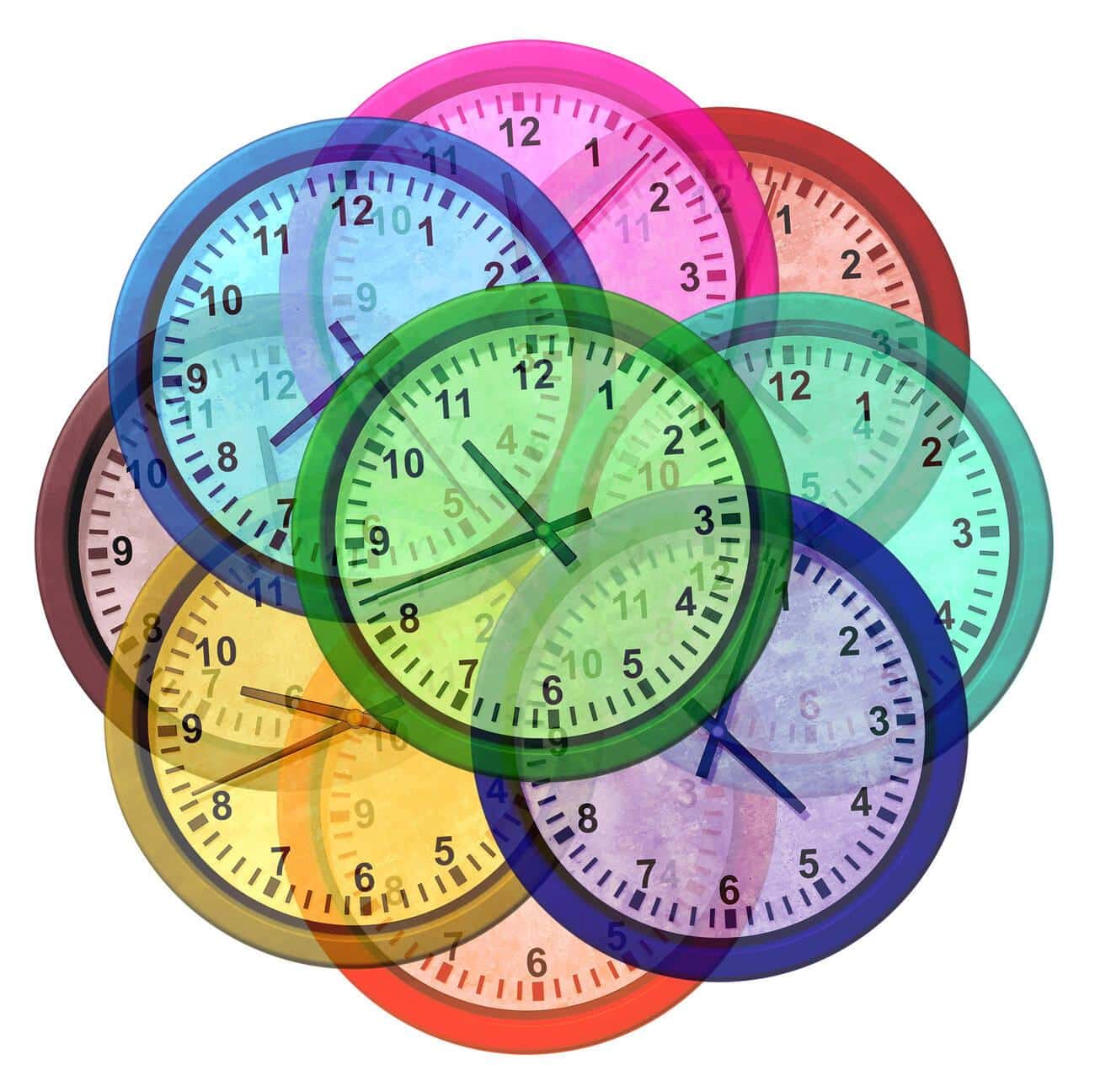Navigating time zones can be puzzling, especially in areas like Indianapolis, with an interesting history of changes. Did you know that Indiana observes both Central and Eastern Time Zones? This blog post is your all-in-one guide to understanding the ins and outs of the Indianapolis time zone situation.
Come along as we delve into past alterations, current scenarios, and future predictions and provide you with the most recent updates!
Content Highlights
- Indianapolis, Indiana, observes the Eastern Time Zone and follows Daylight Saving Time.
- The history of time zone changes in Indianapolis dates back to different periods, with shifts between Central and Eastern times.
- There are ongoing debates about whether Indiana should be on Eastern or Central Time, but currently, most of the state is in the Eastern time zone.
- To stay updated on the current time in Indianapolis, you can use various online tools like Time Zone Tools and consult a Time Zone Map.
Time Zone in Indianapolis, Indiana, USA
Indianapolis, Indiana, is located in the Eastern Time Zone and observes Daylight Saving Time.
Daylight Saving Time
In Indianapolis, Daylight Saving Time starts on March 12, 2024. The clocks change twice a year. In the spring, they go forward; in the fall, they go back an hour. But this wasn’t always true for Indiana.
Until 2006, people didn’t use Daylight Saving Time here. Many folks still debate whether it should be used or not. It is often linked to saving energy and getting more daylight in the summer months.
Eastern Time Zone
In Indianapolis, the Eastern Time Zone is in use. It’s five hours behind Coordinated Universal Time (UTC-5). This time zone includes most of Indiana, with Indy at its heart. But not all parts of Indiana follow it.
Only 18 counties in the northwest and southwest don’t fall under this rule.
The Eastern Standard Time (EST) changes to Eastern Daylight Time (EDT) for part of the year. This change helps us make better use of daylight during long summer days. The clock moves forward by one hour as we spring into EDT from EST!
Also Read: Mastering GMT Time Zone
History of Time Zone Changes in Indianapolis
The history of time zone changes in Indianapolis can be traced back to different periods, including pre-1918, 1918 to 1948, 1949 to 1959, and so on.
Pre-1918
In 1918, the whole state of Indiana used the Central Time Zone. Indianapolis had no changes in its time zone before this year. The United States did not start using Daylight Saving Time until that same year.
As a result, there was no use of fast time or shifting clocks ahead in Indianapolis before 1918. So, life was simpler without thinking about any changes to the clock.
1918 to 1948
From 1918 to 1948, there were some important changes regarding the time zone in Indianapolis. All of Indiana was part of the Central Time Zone during this period. This happened because the United States Congress passed a law called the Standard Time Act in 1918.
It placed Indiana in the Central Time Zone along with several other states. However, things started to change towards the end of this period when daylight saving time became popular in the late 1940s.
So, between 1918 and 1948, Indianapolis followed Central Time but with some shifts due to daylight saving time.
1949 to 1959
From 1949 to 1959, Indianapolis went through some changes with its time zone. Back then, Indiana did not observe daylight-saving time like it does now. It caused a lot of confusion and problems for the people in Indianapolis.
They had to constantly adjust their clocks whenever they crossed county lines because different counties followed different time zones. This created a lot of chaos and made daily life more difficult for residents and businesses.
Eventually, in 1957, Indiana decided to unify the state under Eastern Standard Time to avoid further complications. Overall, this period was marked by the struggle to establish a consistent time zone system in Indianapolis.
Read Also: The Pacific Time Zone: A Look at the Cities and States
1960 to 1977
From 1960 to 1977, Indianapolis experienced some significant changes in its time zone. These changes were made to align the city with the Eastern Time Zone, where most of Indiana was at the time.
Before this change, Indianapolis followed Central Standard Time. The switch to Eastern Time impacted the city’s daily lives and businesses. It also caused some confusion and adjustment for residents who had become accustomed to a different time zone.
Overall, these time zone changes shaped Indianapolis’ relationship with time during this period.
County petitions (1977 to 1991)
From 1977 to 1991, there were petitions from some counties in Indiana regarding time zone changes. Pike County Commissioners, for example, asked the Department of Transportation (DOT) to move them to the Eastern Time Zone.
The Indiana General Assembly also requested the USDOT to consider moving five counties in southwest Indiana to a different time zone. These county petitions played a role in the history of time zone changes in Indianapolis, but we do not have specific details about what happened or how it was resolved during this period.
2005 to 2007
In 2005, some changes were made to the time zone in Indianapolis. Mitch Daniels, the governor then, implemented daylight-saving time in all of Indiana. This meant that the clocks were adjusted twice a year to give more daylight during the summer months.
Before this change, Indiana had mostly stayed the same since 1972, when it switched to the Eastern Time Zone. These changes caused some controversy and debates among residents about the impact on their daily lives and businesses.
It was an important period for understanding the history of time zones in Indiana, as a comprehensive study was published during this time.
Ongoing controversy
The ongoing controversy surrounding the history of time zone changes in Indianapolis is a topic that continues to spark heated debates. There has long been a disagreement about whether Indiana should be on Eastern Time or Central Time.
Currently, most of Indiana is in the Eastern time zone, except for 18 counties which are in the Central time zone for convenience. The Department of Transportation has proposed a compromise where most of Indiana would stay on Eastern Standard Time year-round, except for areas like Gary.
However, there are still differing opinions and discussions about what the future holds for time zone changes in Indianapolis.
Current Time in Indianapolis
Find out the current time in Indianapolis with our Time Zone Tools, Time Zone Map, and information on the time difference from other cities. Stay updated with sunrise, sunset, day length, and solar time for Indianapolis.
Read more to stay informed!
Time Zone Tools
Some handy tools are available to help you stay on top of the time in Indianapolis. Time Zone Tools can assist you with knowing the current local time in Indianapolis and the time difference from other locations.
A Time Zone Map can help visually understand where Indianapolis falls within the Eastern Time Zone. Additionally, you will find information on sunrise, sunset, day length, and solar time for Indianapolis.
These resources ensure that you can easily keep track of the time in this bustling city.
Time Zone Map
The time zone map of the United States shows the different time zones across the country. Indiana is divided into two time zones: Central Time and Eastern Time. The majority of Indiana, including Indianapolis, follows Eastern Time.
However, there are 18 counties in Indiana that follow Central Time instead. So if you look at a time zone map of the United States, you’ll see that Indianapolis falls within the Eastern Time Zone along with other cities like Jasper and Jeffersonville in Indiana.
It’s important to keep this in mind when planning your trips or scheduling virtual meetings with people from different parts of the country.
Read More: Stay Ahead with our Latest Guide to UTC Time Zone
Time difference from Indianapolis
Indianapolis has different time differences with various major cities around the world. The following table illustrates these differences:
| City | Time Difference |
|---|---|
| New York | Same Time Zone |
| Los Angeles | 3 hours behind |
| Chicago | 1 hour behind |
| London | 5 hours ahead |
| Paris | 6 hours ahead |
| Moscow | 8 hours ahead |
| Beijing | 12 hours ahead |
| Sydney | 14 hours ahead |
Please note that these time differences can change due to the observance of Daylight Saving Time, which begins at 2 a.m. on the second Sunday in March in Indiana. As such, it’s crucial to stay updated with the latest changes and adjust your timings accordingly.
Sunrise, sunset, day length, and solar time for Indianapolis
In Indianapolis, the sunrise, sunset, and day length pattern varies throughout the year. Solar time, a measure of the sun’s position in the sky, also reflects these changes. Below is a table showcasing this information.
| Date | Sunrise | Sunset | Day Length | Solar Time |
|---|---|---|---|---|
| August 1, 2024 | 6:29 AM | 8:47 PM | 14 hours, 18 minutes | 109 minutes ahead of apparent solar time |
| August 15, 2024 | 6:41 AM | 8:31 PM | 13 hours, 50 minutes | 110 minutes ahead of apparent solar time |
| August 31, 2024 | 7:00 AM | 8:04 PM | 13 hours, 4 minutes | 111 minutes ahead of apparent solar time |
The times listed for sunrise and sunset account for any daylight-saving time adjustments. This change is automated using the NOAA Improved Sunrise/Sunset Calculation. Furthermore, astronomical twilight, the time before sunrise and after sunset when the sky is still illuminated, is also present in Indianapolis. Regardless of the time zone, sunrises in Indianapolis generally occur at approximately the same time each day. More specific solstice and equinox times can be found on the U.S. Naval Observatory’s Astronomical website.
Impact of Time Zone Changes
Time zone changes in Indianapolis have had historical significance and significant effects on daily life and business, with residents’ perspectives shaping the ongoing controversy.
Historical significance
The time zone changes in Indianapolis have historical significance. The adoption of standard time in Indiana was driven by improvements in transportation. Daylight-saving time became popular in cities during the late 1940s.
Over time, the official dividing line between Eastern and Central time zones has moved progressively westward. These changes have impacted daily life and business in Indianapolis, as well as on residents’ perspectives.
Additionally, the ongoing controversy surrounding time zone changes continues to spark debates and discussions among the public.
Effects on daily life and business
The time zone changes in Indianapolis have significant effects on daily life and business. These changes can cause confusion and disruption for residents and businesses alike. For example, when daylight saving time begins or ends, people may feel disoriented due to the shift in their daily routines.
Some may struggle with adjusting their sleep schedules, leading to tiredness and decreased productivity. Additionally, businesses need to consider the impact on their operations, such as scheduling meetings across different time zones or coordinating deliveries with suppliers in other regions.
The time zone changes can also affect communication with clients or customers who may be located in different states or countries. Overall, these shifts in the Indianapolis time zone require individuals and organizations to adapt and make necessary adjustments to ensure smooth functioning in daily life and business activities.
Perspectives of residents
Residents of Indianapolis have varying perspectives on the time zone changes that have taken place over the years. Some may appreciate the consistency brought by observing daylight-saving time statewide, as it eliminates confusion caused by clock changes.
Others may have experienced disruptions to their daily routines or business operations due to these changes. The impact of time zone adjustments on residents’ lives and overall well-being remains an area of interest and discussion among the community.
Central Time Coalition
The Central Time Coalition was formed to advocate for a change in Indianapolis’ time zone. Learn about their goals and the ongoing debates surrounding this issue. Read more here!
Formation and goals
The Central Time Coalition is a group that came together to support the Central Time Zone in Indianapolis. They want to advocate for the benefits of being in the Central Time Zone and promote convenience for residents and businesses.
The formation of this organization was influenced by the ongoing controversy surrounding time zones in Indianapolis.
Advocacy for Central Time Zone
The Central Time Coalition is working hard to advocate for the central time zone in Indianapolis. They want to restart the clock debate in Indiana and push for a change to the Central time zone.
This could have significant impacts on citizens, businesses, and government in the state. This potential time zone change would affect the entire state of Indiana, including Indianapolis.
The Central Time Coalition believes that moving to the central time zone would be beneficial for various reasons, which they aim to highlight through their advocacy efforts.
Read Also The Dallas Time Zone: A Must-Know for Travelers
The Future of Time Zone Changes in Indianapolis
What can we expect for the future of time zone changes in Indianapolis? Discover the potential for further changes and explore public opinions and debates surrounding this topic.
Potential for further changes
There is speculation about potential time changes in Indianapolis in the future. The adoption of Daylight Saving Time in Indiana could make the Eastern time zone obsolete, which means that there may be a need for further adjustments to the local time.
Ongoing discussions and updates are being followed regarding this topic, but the exact future of time zone changes in Indianapolis is still uncertain. It will be interesting to see how this situation develops and its impact on the daily lives of residents and businesses in the area.
Public opinions and debates
The time zone debate in Indianapolis has sparked a lot of public opinion and debates. Many residents strongly feel about whether the city should be in the Eastern or Central Time Zone.
Some argue that being in the Eastern Time Zone aligns better with other major cities, while others believe that being in the Central Time Zone would be more convenient for business and travel.
The issue has been covered extensively by local news outlets, and it continues to be a significant topic of discussion in the region. With another potential time change on the horizon, these debates are expected to reignite once again.
Related articles and resources
– Explore the fascinating history of time zones in Indianapolis with this in-depth article from the Indiana State Library.
– Check out the official website of the Central Time Coalition to learn more about their efforts to advocate for a switch to the Central Time Zone in Indianapolis.
– The U.S. Naval Observatory provides detailed information on sunrise, sunset, and solar time for Indianapolis and other cities around the world.
Additional information on Indiana time zones
Indiana is an interesting state when it comes to time zones. Most of Indiana follows Eastern Time, but there are some communities that choose to use Central Time instead. As of April 2006, the majority of Indiana is in the Eastern time zone, except for 18 counties in northwest and southwest Indiana.
So if you’re ever planning a trip to Indiana, it’s important to double-check the local time zone to make sure you don’t get confused.
State resources and official information
If you need more information about the time zone in Indianapolis, Indiana, USA, there are some state resources and official information you can check out. The Ohio Department of Transportation (ODOT) provides assistance with safe and smooth transportation in Ohio.
The National Association of REALTORS® offers resources on real estate matters. Also, the Alzheimer’s Association provides helpful information on Alzheimer’s disease and dementia. These sources can be valuable for finding additional details about the Indianapolis time zone and related topics.
Frequently Asked Questions (FAQs)
Check the answers below if you want to know more about the Indianapolis time zone.
1. What is the time zone in Indianapolis?
The time zone in Indianapolis is Eastern Standard Time (EST) during standard time and Eastern Daylight Time (EDT) during daylight saving time.
2. Does Indianapolis observe daylight saving time?
Yes, Indianapolis observes daylight saving time. The clocks are set forward by one hour on the second Sunday of March and set back by one hour on the first Sunday of November.
3. How can I stay updated with the latest updates regarding the time zone changes in Indianapolis?
You can stay updated with the latest updates regarding the time zone changes in Indianapolis by checking official sources such as government websites or local news outlets.
4. Are there any exceptions to the observed time zone in Indianapolis?
No, there are no exceptions to the observed time zone in Indianapolis. The entire city follows Eastern Standard Time (EST) and Eastern Daylight Time (EDT).














































